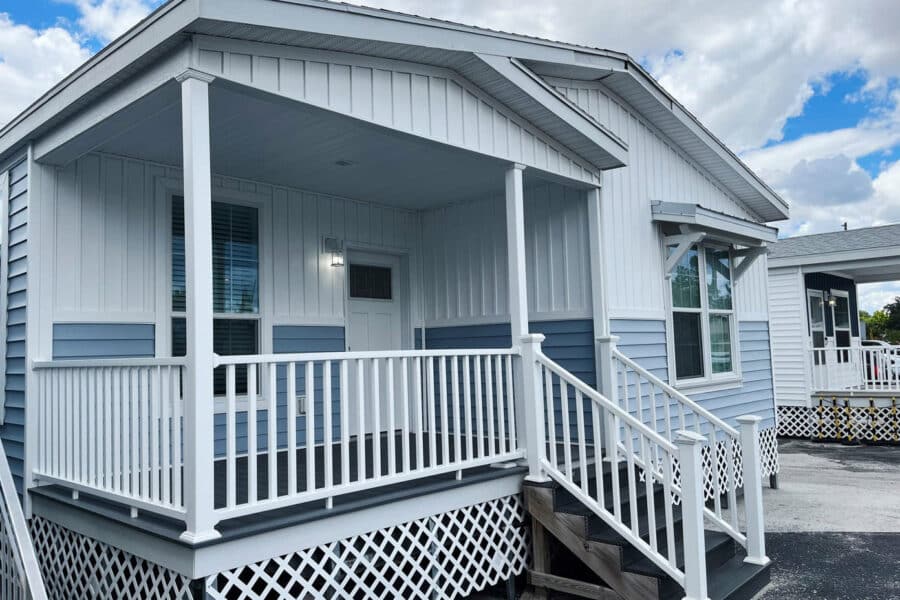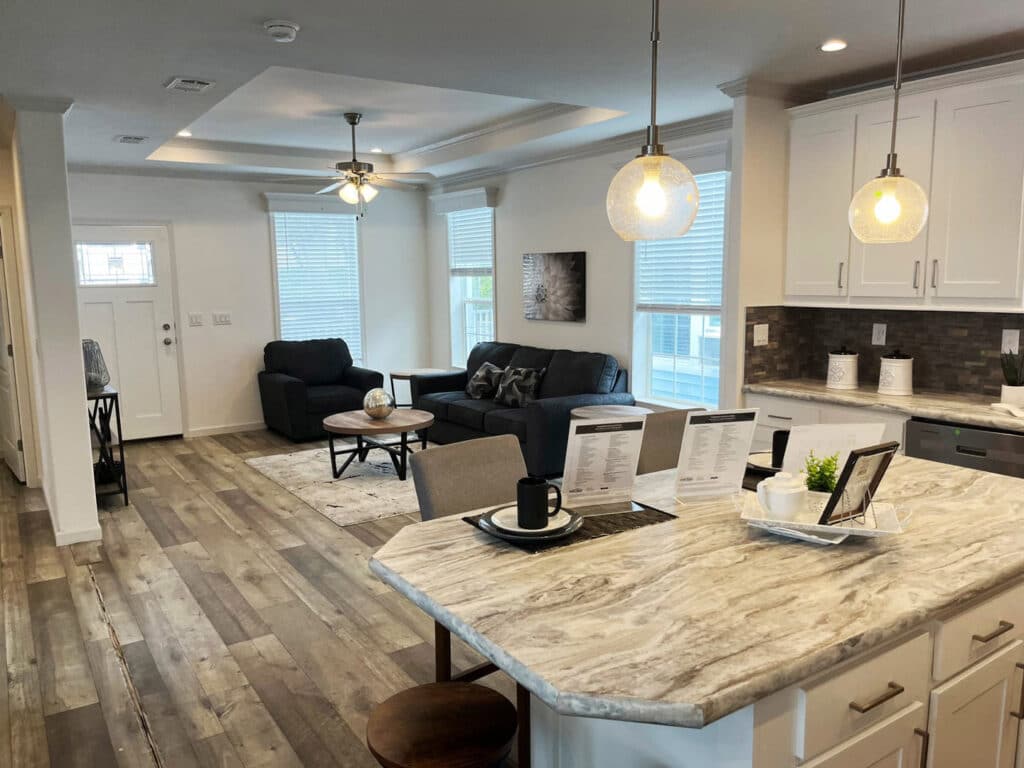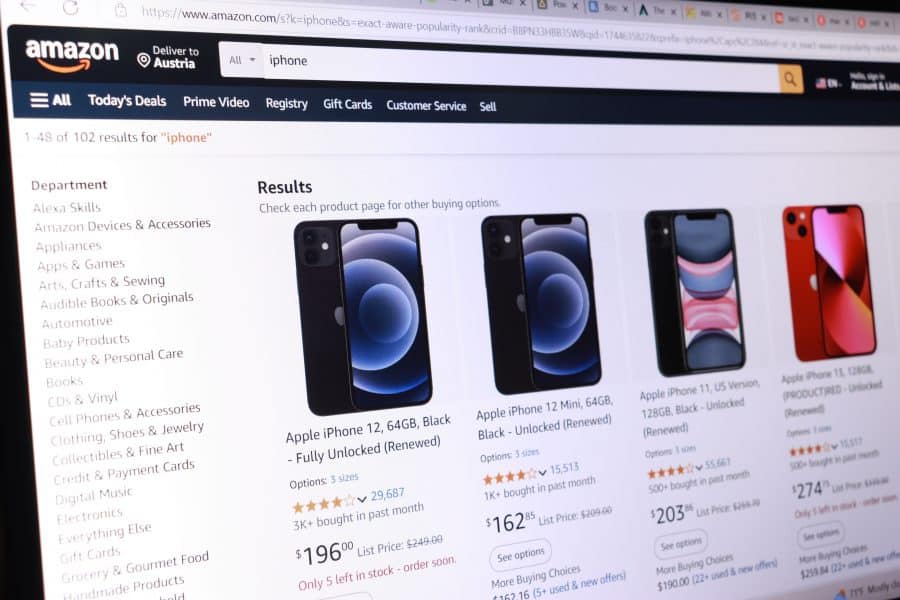
Not your grandpa’s mobile home
Jim Ayotte is convinced if you tour one of Florida’s 10 house-building factories you will change your mind about the quality of the manufactured homes.
“I spend a lot of time bringing people to see the factory-built housing process and every time I do they’re totally impressed,” said Ayotte, executive director of the Florida Manufactured Housing Association. You’d expect such a statement from the leader of a group that advocates for manufactured housing builders and retailers statewide. But don’t just take his word for it. Among the government officials and housing advocates who’ve tromped through manufacturing plants is Florida Senate President Kathleen Passidomo, who joined Ayotte on a tour of a factory in Plant City. Katie Betta, Passidomo’s deputy chief of staff for communications, confirmed the visit, saying, “I know she was impressed by the quality and design of the homes she saw.”
To be sure, the new models coming off assembly lines aren’t the shoddy mobile homes found in trailer parks of yesteryear. In fact, officially, a mobile home has not been built in the United States since mid-1976 when a federal law went into effect to establish national building code standards for a new class of shelter known as “manufactured housing.” Manufactured homes are built in a factory to national standards administered by the U.S. Department of Housing and Urban Development (HUD). HUD codes have been strengthened numerous times over the years, such as after natural disasters like Hurricane Andrew in 1992. Today, well-installed factory-built houses are comparable to site-built housing when it comes to energy efficiency, fire protection and wind safety.
The new products aren’t the rectangular eyesores of yore, either. In June, I visited a showroom adjacent to a Skyline Champion Corp. factory in Ocala, which displayed units that look like traditional site-built homes. The best-seller is a 1,254-square-foot model with two bedrooms and two baths. It comes with a pitched roof, built-in front porch, energy-efficient windows, and an open layout with drywall interiors and crown molding. Price: $129,000. (Not including land.)
Costs and trends
Manufactured housing is less labor intensive, more automated and less prone to weather-related delays and waste than building on site. Using a factory is just common sense, Ayotte argues. You build cars in a manufacturing plant, so why not a house?
In 2023, the average price for a new manufactured home was $87 per square foot, roughly half the $166 cost for a new site-built home, excluding the cost of land, according to surveys from the U.S. Census Bureau and HUD. Florida ranks No. 1 nationally in the number of manufactured homes with 822,000, roughly 10% of the U.S. total of 8.2 million (Figure 1). Some rural counties in Florida have more manufactured homes than traditional site-built homes. Nationally, manufactured houses accounted for 5.6% of all U.S. homes in 2021; 30% of these were sited on land leased in a manufactured home community.
Sources: Joint Center for Housing Studies of Harvard University, University of Florida Bergstrom Real Estate Center
Yet factory-built housing’s share has fallen since a peak in 2000 when they represented 7.6% of U.S. homes. The data was cited in a 2024 report on barriers to greater use of manufactured housing produced by Harvard’s Joint Center for Housing Studies.
Land use and zoning restrictions
A stigma about poor quality and aesthetics contributes to what experts said is the industry’s biggest challenge: local and state land use and zoning restrictions that limit the wider potential for manufactured housing. “There’s definitely some perception issues but when you see the current models you can dispel that pretty quickly,” said Darren Krolewski, co-president of Datacomp, which tracks industry data and provides sales listings. “Honestly, the biggest issues are zoning.” Ayotte agreed. “Consumer demand is not a major obstacle. Consumers want to buy our homes,” he said. “Land use policies are probably the number one issue that is impacting the growth of the industry.”
In a 2023 paper for the Lincoln Institute of Land Policy, Daniel Mandelker, one of the nation’s leading land-use and zoning law scholars, outlined 18 common categories of regulation that restrict factory-built homes. These include land-use and zoning provisions that outright ban the placement of manufactured housing, stringent exclusionary design prerequisites and requiring special permits not imposed on site-built homes. Mandelker, a professor emeritus at the Washington University School of Law, argues that courts have treated manufactured homes unequally not based on facts but “public perception.” Such restrictions may violate the U.S. constitution’s equal protection clause and should not be upheld by courts, he said, though they often have been.
Ayotte provided examples of such discriminatory zoning in Florida. Orange County’s AG-1 zoning district requires lots of a minimum of two acres for a manufactured home but just half an acre for a traditional single-family residence. In Highlands County, commissioners earlier this year passed a moratorium on new manufactured home communities. At press time, the commissioners scheduled a vote in July on new land development regulations that Ayotte said would make it impractical to build a manufactured housing community in the county.
Even so, other signs indicate that manufactured housing may be gaining momentum. In June, Jackson County, Fla., commissioners repealed a long-standing land use ordinance that prohibited manufactured housing in the Compass Lake in the Hills subdivision. Variances had been approved previously to permit manufactured homes on a case-by-case basis, but removing the prohibition allows the homes by right.

Nationally, the Biden administration’s 2024 “housing supply action plan” includes grants for manufactured housing communities and increased financing options for buyers. On June 25, the Federal Reserve Board of Philadelphia hosted a conference attended by a wide range of housing experts to address reforms that may help solve financial and legal challenges to more manufactured housing. And, last year, the Florida Legislature included manufactured homes in the state’s housing strategy for the first time. “It’s a step in the right direction,” Ayotte said, but lacks teeth. (The statute’s language states: “state and local governments should consider and implement … modern housing concepts such as manufactured homes, tiny homes, 3-D printed homes and accessory dwelling units.”)
In the end, Ayotte is under no illusion that every elected official, local zoning board member and resident of a traditional neighborhood will suddenly embrace manufactured houses. Opposition runs deep in many places, sometimes in a NIMBY (not in my back yard) manner.
But he hopes by exposing more people to factory-built houses he’ll win enough of them over so more folks can consider manufactured homes as an affordable housing option. “I would never advocate that manufactured homes belong everywhere,” he said. They best fit in neighborhoods where they look pretty much like the other homes. “Otherwise, we’re just shooting ourselves in the foot.”
Author: Charles Boisseau is editor of Due Diligence.
Related stories
For the media
Looking for an expert or have an inquiry?
Submit your news
Contact us
Follow us on social
@ufwarrington | #BusinessGators


